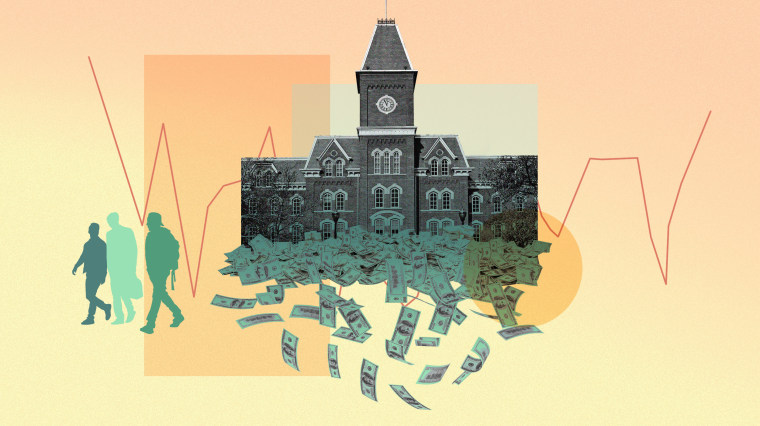This article about college financial health was produced in partnership with The Hechinger Report, a nonprofit, independent news organization focused on inequality and innovation in education. This is part of the Colleges in Crisis series.
Even before the coronavirus pandemic forced colleges to close their campuses, many schools were already struggling financially. To examine how institutions were positioned to respond to the COVID-19 crisis, The Hechinger Report created a Financial Fitness Tracker that put the nation’s public institutions and four-year nonprofit colleges and universities through a financial stress test. The tracker’s key metrics include enrollment, tuition revenue, public funding and endowment health.
Methodology:
The Financial Fitness Tracker was developed by The Hechinger Report using methodology created by Robert Zemsky, Susan Shaman and Susan Campbell Baldridge, as laid out in their book, “The College Stress Test.” The scores draw on publicly available data provided by the National Center for Education Statistics, a part of the federal Department of Education, as well as projections based on that data.
The scores show the estimated amount of financial stress on an individual institution after the 2019-20 academic year without attempting to quantify the still-uncertain effects of the coronavirus crisis. The tracker makes no determination about whether a school is more or less likely to close or merge with another institution, nor does it assess the quality of education an institution offers or its competitiveness against other institutions.
Public four-year universities and private, nonprofit four-year universities are scored in four categories, while public two-year colleges are scored in three categories. (Schools with fall enrollments of fewer than 100 students are excluded from the analysis.)
- The categories for public four-year universities are: change in enrollment of first-time undergraduate students, retention rate, change in the average tuition-and-fees revenue per student* and change in state appropriations.*
- The categories for private, nonprofit four-year universities are: change in enrollment of first-time undergraduate students, retention rate, change in the average tuition-and-fees revenue per student* and change in the ratio of endowment to total expenses (excluding any hospital costs).
- The categories for two-year public colleges are: change in entering student enrollment, change in the ratio of tuition-and-fees revenue to instructional costs and change in state and local appropriations.*
The values, which are based on publicly available data for the 2009-10 to 2016-17 academic years, are then projected three years out, to 2019-20. This projection yields an estimate of the most recent academic year, which is not yet available due to schools’ delayed release of data.
To determine what threshold a school must cross to be given a warning sign on the tracker, we use the values of the rate of change in most categories. Those values are calculated by taking the percent change across an eight-year span, from 2009-10 to 2016-17. (The retention values are calculated simply by using the 2016-17 retention percentage instead of rate of change.)
For more of NBC News' in-depth reporting, download the NBC News app
These rate of change values are used to determine two thresholds — alert and warning — by taking the 20th and 10th percentile, respectively, for each metric for schools in the same sector (four-year publics, four-year privates, two-year publics).
An institution then receives a score for each category based on where it falls in comparison to the other schools in its sector. The scores range from 0 to 3 in each category and are determined by whether the values for each metric are projected to cross the alert or warning thresholds in 2019-20.
The schools receive a score of 0 in a category when the projected value is above the alert threshold; in other words, these schools would be in the top 80 percentile for that category. Values that reach the alert threshold earn the school a score of 1, while values that cross the alert threshold but do not reach the warning threshold earn the school a score of 2. Values that reach or cross the warning threshold — meaning that the school would fall in the bottom 10th percentile in the category — earn the school a score of 3.
*These values are inflation adjusted using the Bureau of Labor Statistics table on inflation. Inflation-adjusted values are calculated by using the nominal dollar value for September 2016 and adjusting past years’ dollar values to that September’s.
Sign up for The Hechinger Report’s higher education newsletter.

